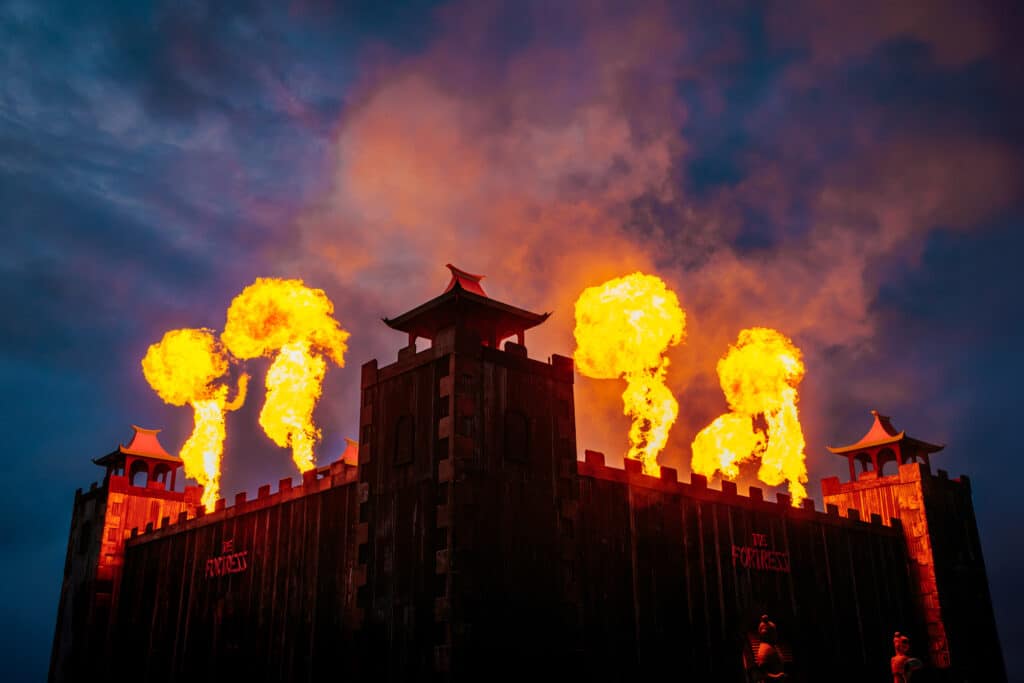
“You don’t find the swimming pool, the swimming pool finds you,” says Nick Chambers, co-founder of Beat-Herder Festival. “It’s like a trapdoor spider – an arm will grab you at some point on the street and be like ‘you’re coming swimming, bring your friends’.”
So, rumours of a swimming pool on site are true, “but we’re trying to hide telling people where it is because we don’t want a thousand people loitering in Speedos hoping to get grabbed,” explains Nick. “I think people think it’s just like a paddling pool, but it’s actually fully functional, it’s a bona fide legitimate swimming pool with lifeguards.”
The Beat-Herder festival in Sawley celebrated its 20th birthday in July 2025. But, for even longer than that, the core team of six friends who just wanted to have a great party have been instinctively building an immersive experience that blends Northern working class culture, absurdity, and fantasy. If Meow Wolf held a rave in rural Lancashire, it would look like this.
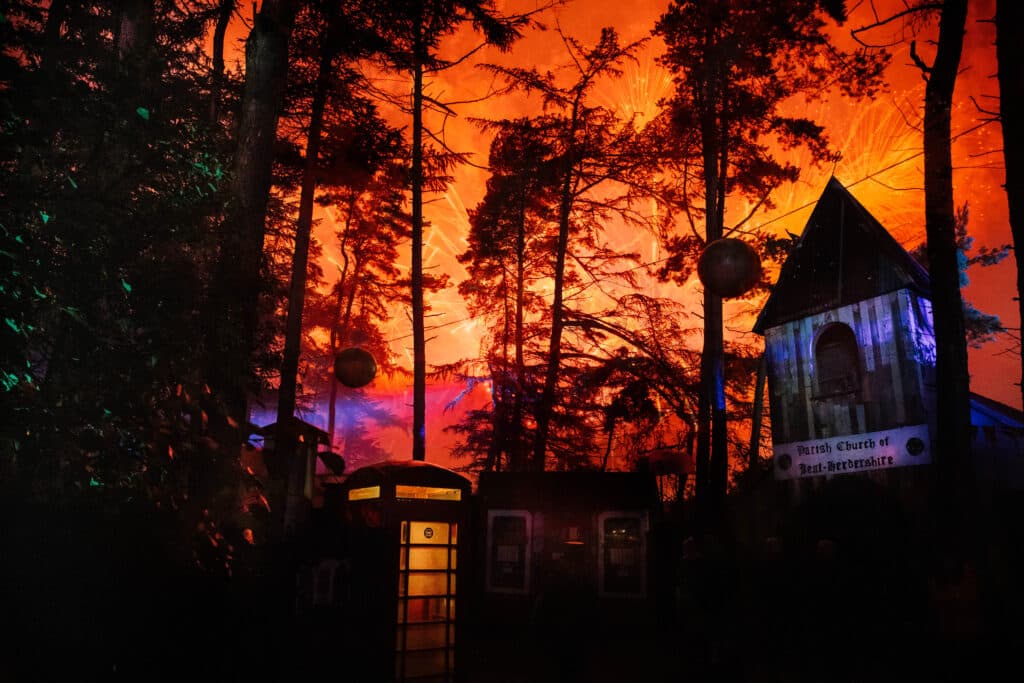
The fictional village of Beat-Herdershire now has its own church, Working Men’s Club, hotel, garage, tattoo parlour, swimming pool, factory, disco, and flame-belching military fortress. All these elements have grown organically over the years around the small woodland stage known as the Toil Trees, where the action first started.
Before Beat-Herder there was, as Nick puts it, two or three years of “smash and grab illegal free party times” on the farm that is the festival site – events similar to those memorialised perfectly by In Pursuit of Repetitive Beats.
In those early days there was Toil Soundsystem, a tea shack, and a space remembered only as Grandad’s Room. Reaching Grandad’s Room meant crawling through a tiny dirt tunnel, and popping up in what was instantly recognisable to visitors as any of their grandparents’ living rooms, with a fireplace, patterned wallpaper, faded armchairs, and a TV showing old episodes of Coronation Street.
“Grandad’s Room was very immersive,” says Nick, “and it was an easy one to do because it was very charity shop-able, to make it just chintzy and disgusting, but in a thorough way, to make it real.”

It’s a level of detail still very much part of the Beat-Herder experience: objects are thrifted and transformed, such as the recycled pews of the church, now with the festival’s distinctive sheep logo carved into them; the many nonsensical rules of the Working Men’s Club are listed everywhere from the beer mats to the fruit machines; stuffed toys, an Eiffel tower and a light-up dance floor await the handful of visitors who can find – and squeeze into – Gay Paris.
“I think what Beat-Herder does is pushes people to find the immersive experiences by making people explore,” says Nick. “It’s not on a plate. Some places are hidden, they’ve got a little hole in the wall you have to climb through, or a doorway that you’re not sure about.”
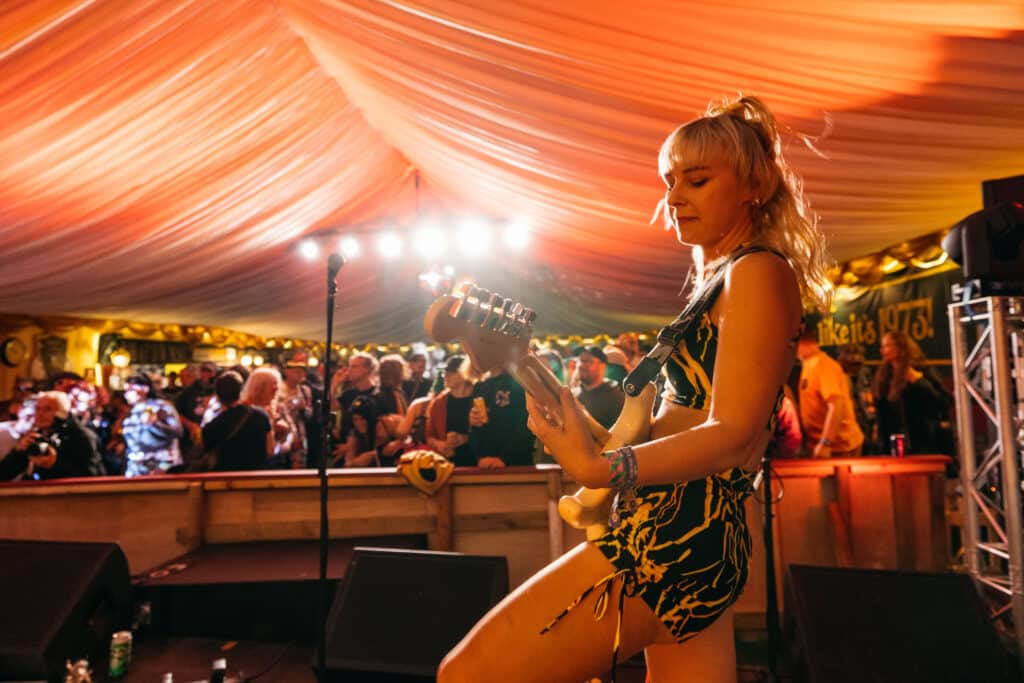
Referring to the event as ‘immersive’ is new to Nick, but it resonates. “I guess it’s part of the ethos of what Beat-Herder does,” he says, “you can have an event that’s off the shelf, you can hire a tent, you can hire a soundsystem. When you go beyond that is where you change, and there’s a choice to make.”
It’s a choice they made as one of several free party crews in the North in the early 2000s, when Toil Soundsystem were part of a DJ-centric rave scene where limited resources meant a limited offer. “You’d go to some parties and in its most basic form it was a tarpaulin with a deck set underneath it, and a generator, and that was it,” says Nick, “we’d always make sure we had a fire, we’d always make sure we had a tea, a Burco boiler going, so you could look after people.”

With Toil Soundsystem’s team also grafting through the day as carpenters and electricians, as well as budding designers, their parties always went a little further. Inspired by visits to Glastonbury Festival, they missed a lot of the bands because “we were in a massive geodesic dome stroking our chins and looking at the construction of the thing.” This led to creating their own tents and designing their own lighting for their parties, and introducing interactive installations like a coconut shy and a hook-a-duck stall.
Their efforts paid off a little too well; Nick recalls that more than a thousand people showed up to the last Toil Soundsystem party at the Sawley site, as word of mouth spread beyond simply friends of friends. “There were people coming from – Christ – all around the Northwest. There were limousines coming from Blackpool, there were cars, there were just so many people and it felt a little bit scary, it was a lot of people to be responsible for.”
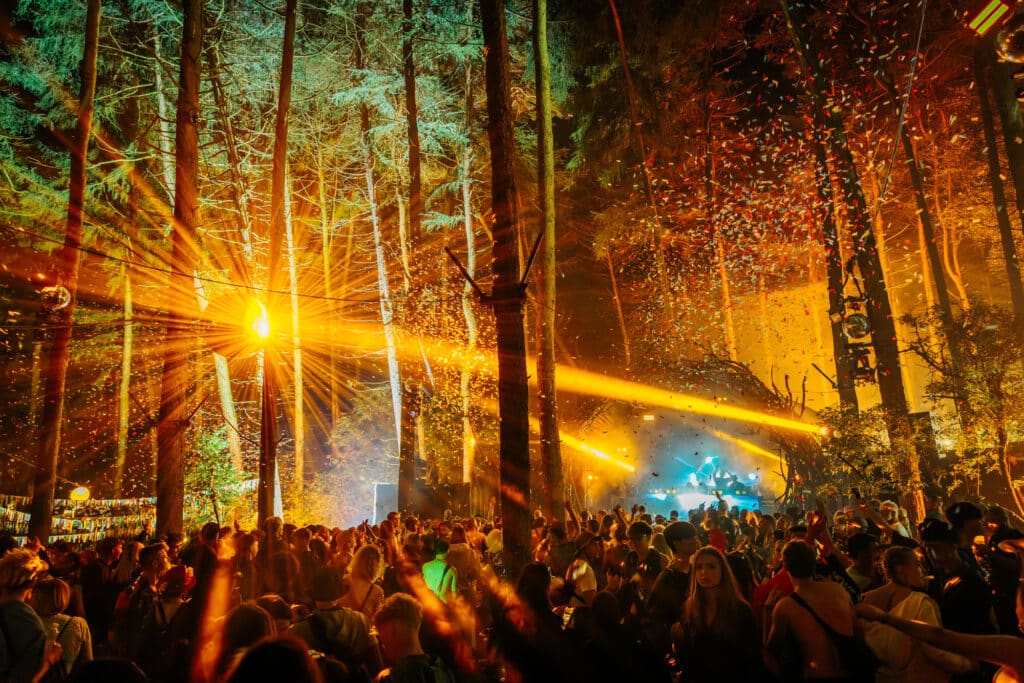
One visitor to that last party suggested they could get a licence and continue legally – a move which created the first Beat-Herder Festival in 2006, and gave their free parties a permanent home.
Initially a decision based on safety, Nick says it quickly presented wider benefits for the whole scene as Toil invited other crews in the region to take part, bringing names like Stumblefunk, Trailer Trash and Bushrocker on board, where they continue to run their own spaces at the festival: “We’d get people in and we’re like ‘come and do this party, you don’t have to worry about the police taking your DJ gear off you’”.
As the festival grew, it continued to reflect back to its audience the Northern working class community of its surroundings, with humour and affection. The clearest example of this is the Beat-Herder & District Working Men’s Club tent, which has a real committee who pick all the turns – a combination of tribute bands, cabaret performances, talent shows and cheesy DJ sets. It’s all perfectly on-brand as a nod to real WMCs, but exaggerated to League of Gentlemen levels.
As for Grandad’s Room, Nick explains that health and safety practicalities kicked in pretty quickly. “It ended up we needed four members of staff to man this tunnel in and out of a room. It was just stupid.”
That doesn’t mean the tunnel was completely lost though; as with many ideas at Beat-Herder, it evolved, and several tunnels around the site are all completely up to scratch. The biggest is through a doorway called The Beyond – a portal to multiple worlds including the psychedelic trance and UV decor of the Sunrise Arena, Bubba Gumma’s mirror-lined club, and the Launderette’s many washing machines and constant stream of bubbles.
Nick warns: “I don’t want this to be like a plot spoiler, but the people that go in the tunnels always perceive that they’ve actually been underground, and none of them are.”
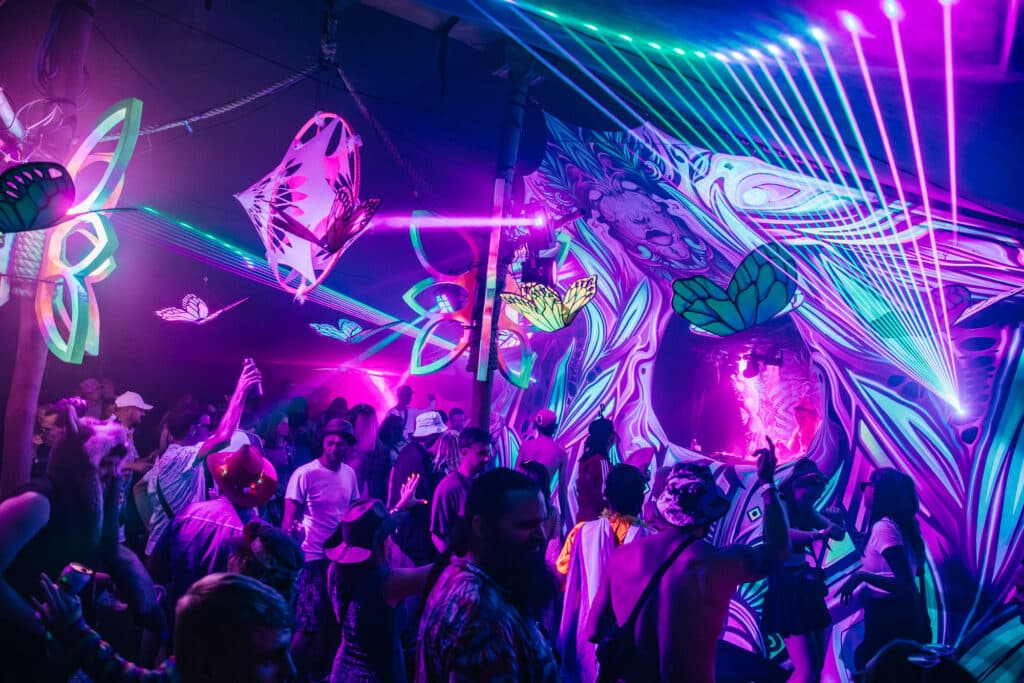
Various stages have come and gone along the way; The Illustrious Society featured wood-panelled walls lined with snooty portraits, and had a bar serving only champagne. Maison D’Etre was a cute country cottage with clothes hanging on washing lines inside, and it disappeared to make way for the much larger Factory – a cavernous two-storey venue perpetually filled with a fine layer of dry ice masquerading as industrial smog. Trash Manor was a mock country pile with performances in front of the grand facade, the audience gathered around a fountain.
As with many immersive experiences, Beat-Herder invites its audience to be part of the world they’ve created, and every Saturday at the festival is fancy dress day. The theme is a different letter each year, and the audience likewise shun off-the-shelf options for homemade and often completely impractical creations that are a joy to behold.

Last year’s ‘f’ theme saw two people dressed in what appeared to be fully functioning fridges with working lights and milk inside, and when the theme was ‘b’ there were a predictable number of bees who were chased and bothered with nets by the few who had thought to come as beekeepers (a friend also dressed up as Ben Affleck’s back, but that’s another story). This year’s ‘g’ did not disappoint either, with guillotines, graters, goldfish and golden showers spotted in the crowd.

As the festival celebrates its 20th anniversary, it has managed to retain not only its independence but also its creative identity, from the overarching concept down to the smallest details. “We want people not to be thinking while they’re dancing ‘oh I need to check if that bid on eBay is going through’,” says Nick, “you’re in an 80ft square, 30ft tall turreted castle with fire coming out, that becomes part of a sensory overload, that’s when you can lose people and take them away.”





